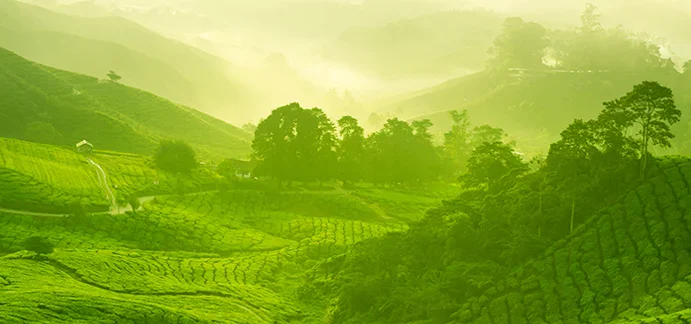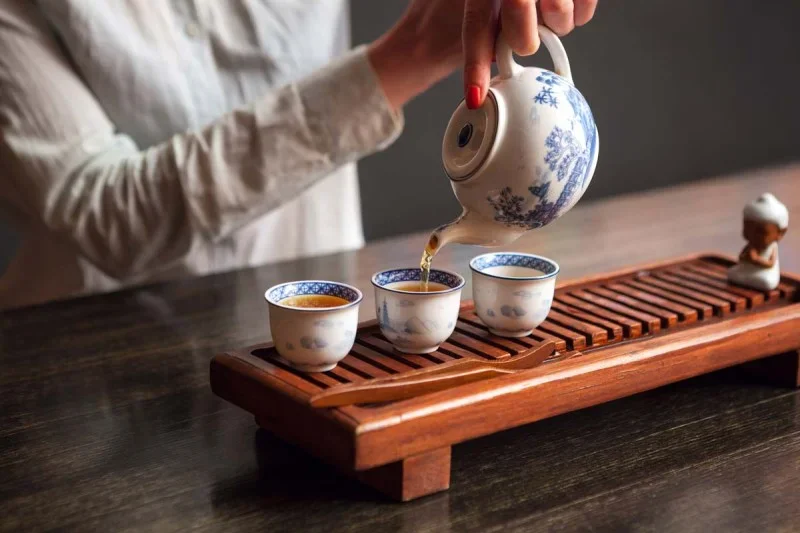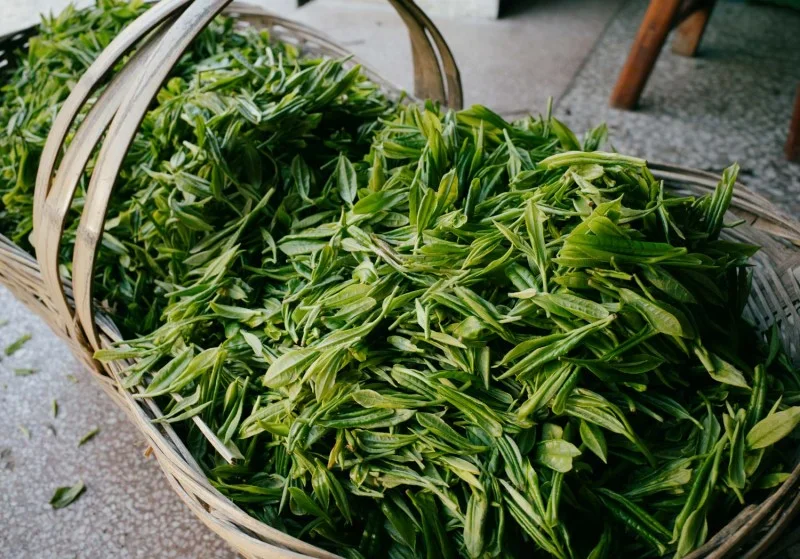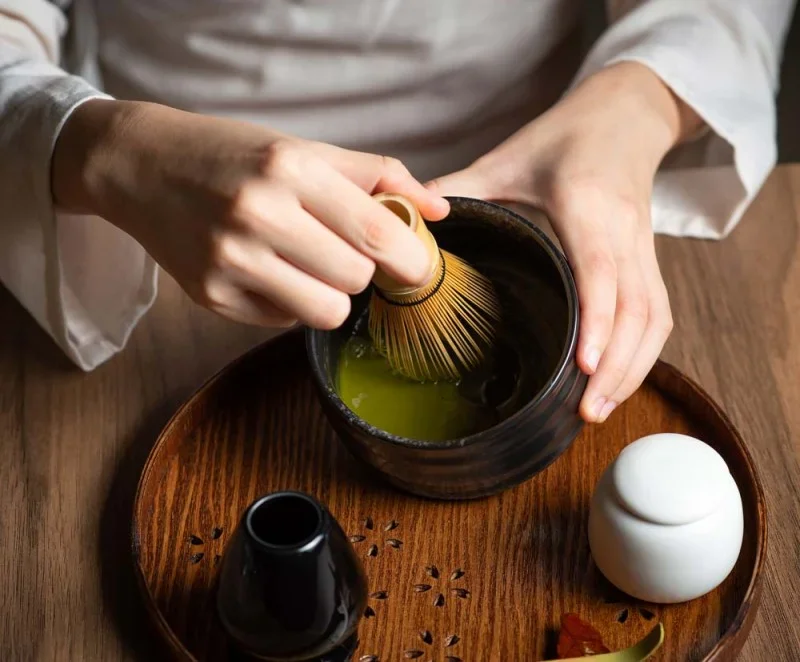
Green tea
Green tea is the unfermented or less fermented variety of tea. The green color is created because the leaves are carefully heated after plucking to stop the brown oxidation process. Green teas contain more active ingredients and aromas, but less caffeine and are milder. The taste ranges from tart and grassy to full-bodied.
All about green tea
Green teas:
Popular in China and Japan
Green teas can be recognized by their green leaf color and the greenish-yellow infusion. Culturally speaking, they are among the oldest teas, which are mainly produced and drunk in the countries where tea originated, such as China, Korea and Japan. There, the Japanese tea ceremony and the "Gong Fu" style have developed special methods of preparation that are closely intertwined with the cultures of these countries.
The green color of the tea leaves is due to the fact that they are carefully heated shortly after picking. This stops oxidation processes that would otherwise turn the leaf brown and give it a different taste (see: black tea). After heating, the leaves are rolled or kneaded to release the cell juices. The aromas and active ingredients they contain then dissolve in the water when the tea is brewed. The leaves are then often rolled or pressed into certain shapes - this also releases cell juices from the inside of the leaves, which are later transferred to the infusion. For the Chinese and Japanese, tea enjoyment traditionally begins with a beautifully shaped leaf - variety names such as "beautifully curved eyebrow" show how much value is placed on the appearance of the dry leaves.


For every taste
The flavor spectrum of green teas ranges from tart and grassy to full-bodied and marine notes, often enhanced by subtle smoky or floral aromas.
Japanese green teas such as Sencha, Kabusecha and Gyokuro are the best known in this country. Japanese matcha teas, such as samova Star Dust, which are used in the tea ceremony, are a specialty: The leaves, which are ground into a fine dust, are whisked into a froth with a bamboo whisk and drunk. They usually have grassy or algae-like flavors, while Chinese green teas tend to taste more bitter and smoky. This is due to the different ways in which the leaves are heated after harvesting: Japanese teas are steamed, while Chinese teas are usually roasted over a wood fire in a wok. The Chinese green teas that are better known in this country are often flavored - for example with jasmine flowers, such as our Jasmine Green, or with mint, such as the "gunpowder" that forms the basis for Moroccan tea blends.

For samova's herbal green tea blends, such as Team Spirit, Inner Light and Green Chill, we have selected particularly robust green tea varieties. We recommend infusing these with boiling water so that the essential oils and other flavors and active ingredients of the herbs can develop properly.
